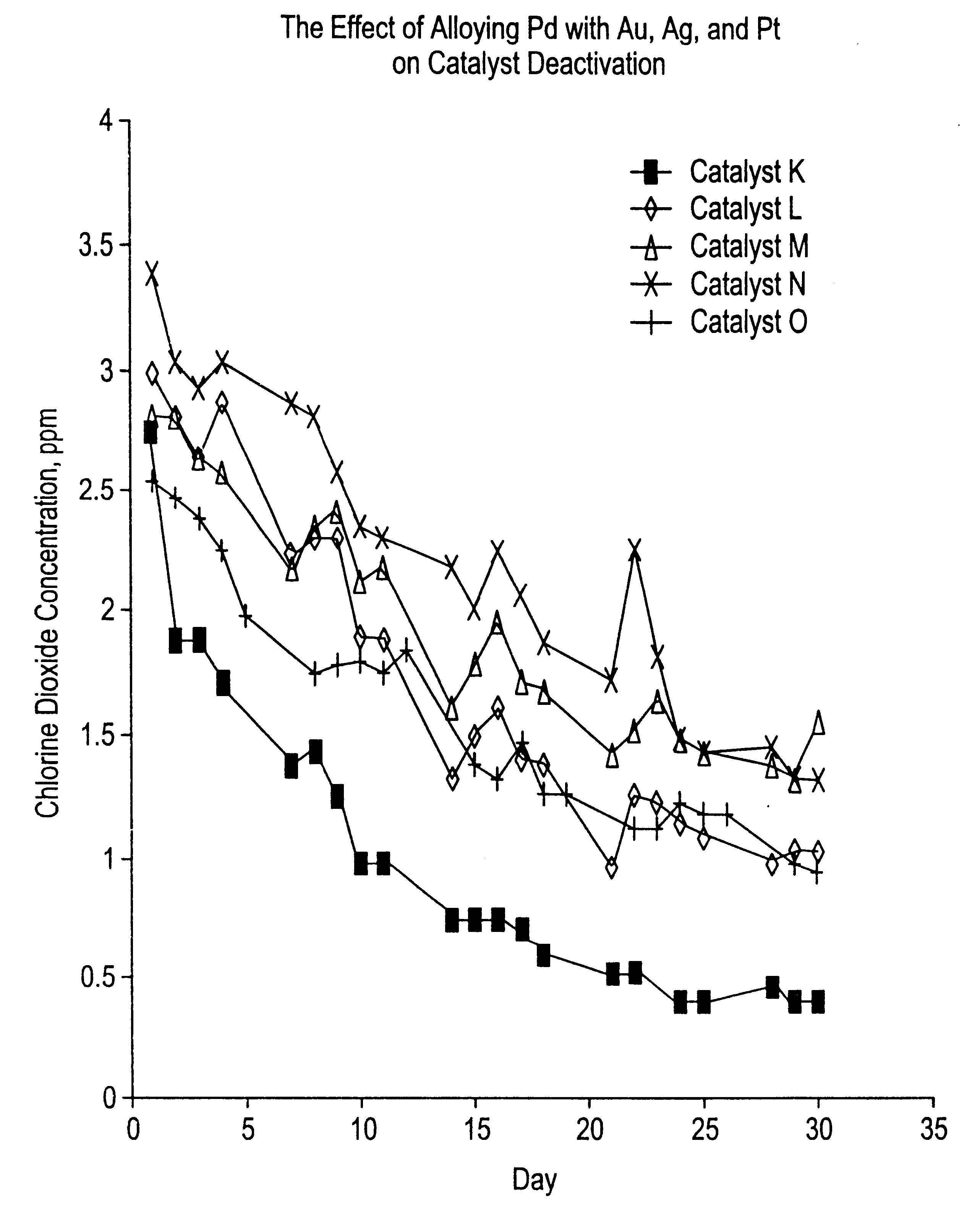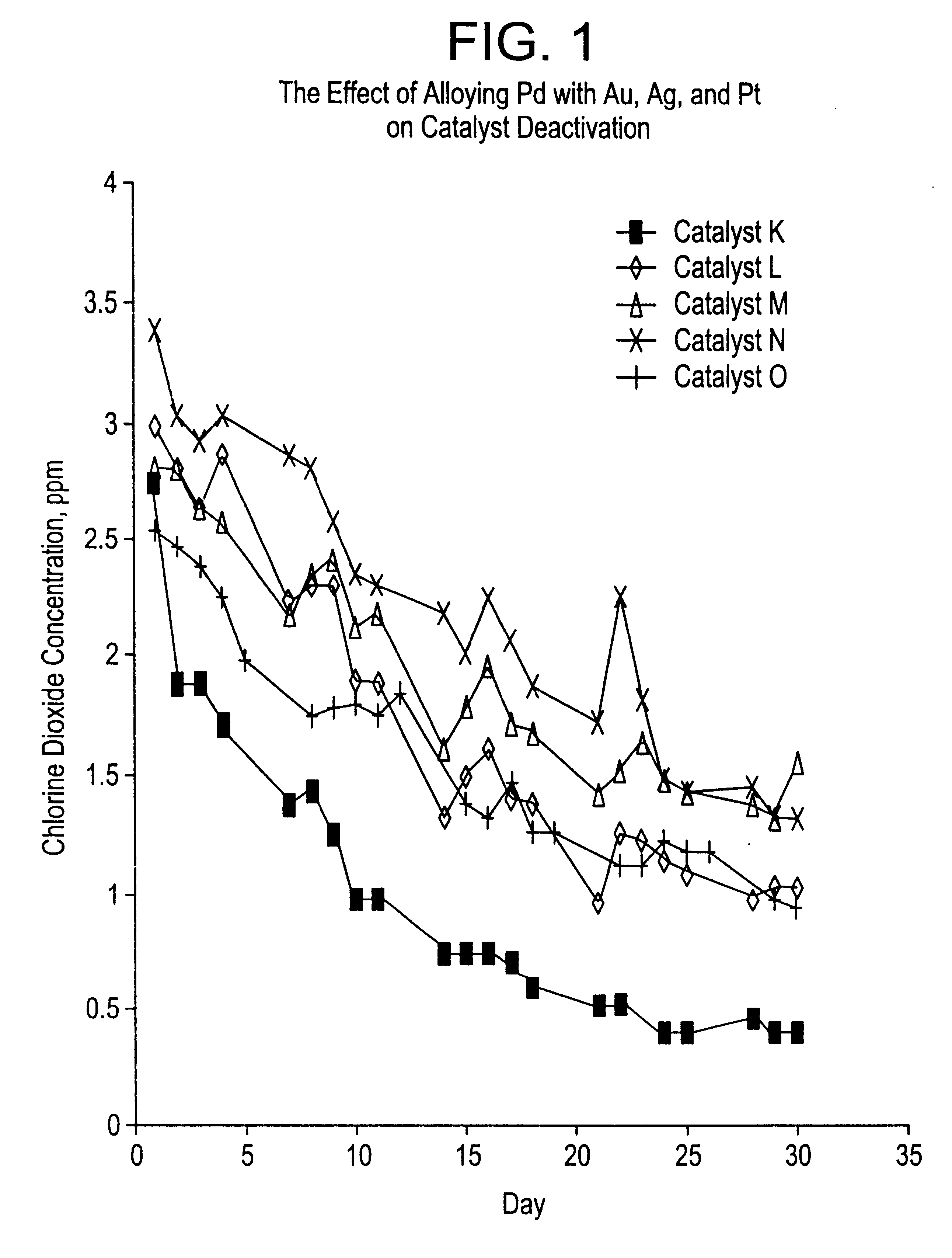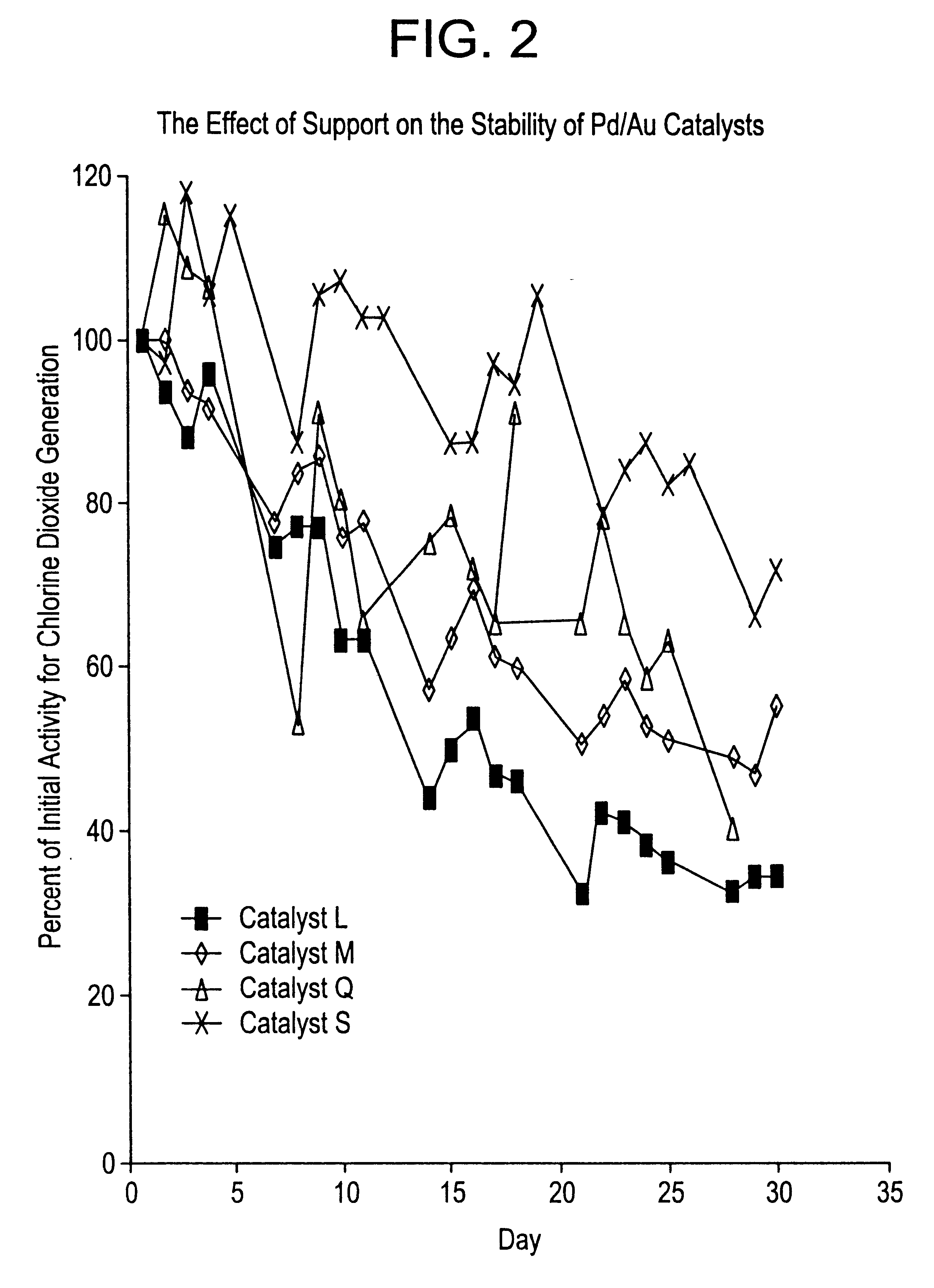Method for the synthesis of chlorine dioxide
a chlorine dioxide and catalyst technology, applied in the direction of physical/chemical process catalysts, halogen oxides/oxyacids, other chemical processes, etc., can solve the problem that known catalysts have the disadvantage of being greatly deactivated within a matter of days
- Summary
- Abstract
- Description
- Claims
- Application Information
AI Technical Summary
Problems solved by technology
Method used
Image
Examples
example 1
Effect of Alloying Pd on Catalyst Activity
As shown in Table 1 and FIG. 1, the alloying of Pd with Pt, Ag or Au decreases the rate of deactivation (in comparison to a catalyst containing only Pd).
Catalyst K was prepared by suspending 48.3 grams of Rhone-Poulenc Chemie spheralite 532, a gamma alumina containing 1.3% La.sub.2 O.sub.3 and 0.5% Nd.sub.2 O.sub.3 and ground to a particle size range of 75 to 212 microns, in 250 ml of deionized water. To this 25 suspension was added an aqueous solution of palladium nitrate containing 2.5 grams of Pd. The pH of the Pd solution had been adjusted to 1.0 with sodium carbonate. After heating this suspension at 80.degree. C. for 15 min., while maintaining the pH at approximately 6-7 with sodium carbonate, a solution of sodium hydroxide and formaldehyde was added and the mixture stirred for another 15 min. The alumina containing 4.9 wt % reduced palladium was filtered, washed with DI water, and dried overnight at 120.degree. C.
Catalyst L was prepar...
example 2
Effect of Different Supports on Catalyst Activity
Catalyst P was made in the same manner as catalyst K except that the support was Aldrich 24,338-8, a commercially available source of MgO.
Catalyst Q was made in the same manner as catalyst L except that the support was Aldrich 24,338-8, a commercially available source of MgO.
Catalyst R was made in the same manner as catalyst N except that the support was Aldrich 24,338-8, a commercially available source of MgO.
Catalyst S was made in the same manner as catalyst M except that the support was Sturcal F, a commercially available source of CaCO.sub.3 from Sturge Chemicals.
Catalyst T was made in the same manner as catalyst N except that the support was Sturcal F, a commercially available source of CaCO.sub.3 from Sturge Chemicals.
The experiments to determine the activity and stability of catalysts P, Q, R, S and T for the generation of chlorine dioxide from sodium chlorite were performed in the same manner as described above.
Table 2 describ...
example 3
The Use of K.sub.2 CO.sub.3 Modified 1 / 32" Alumina Spheres as a Support
Table 4 and FIG. 6 demonstrate that a suitable catalyst can also be made on a K.sub.2 CO.sub.3 modified fixed bed support. A 500 gram portion of the Condea 1 / 32" alumina spheres was modified by spraying on a solution that contained 10 g of K.sub.2 CO.sub.3 and 215 grams of water. This was followed by a drying step at 100.degree. C. in a rotating drum and an air calcination at 950.degree. C. for one hour. As shown in Table 5, this modification has no noticeable effects on physical properties of the support.
TABLE 4
Catalyst U was prepared by spraying 110.4 grams of the above mentioned K.sub.2 CO.sub.3 modified Condea alumina 1 / 32" spheres with a 28.5 ml precious metal solution containing 6 grams of palladium as palladium chloride, 3.6 grams of gold as tetrachloroauric acid, 5ml of 20% Na.sub.2 CO.sub.3 solution. The catalyst was then reduced in a 20 ml solution comprised of 29.3% sodium formate and 2% hydrazine at 2...
PUM
| Property | Measurement | Unit |
|---|---|---|
| temperature | aaaaa | aaaaa |
| temperature | aaaaa | aaaaa |
| time | aaaaa | aaaaa |
Abstract
Description
Claims
Application Information
 Login to View More
Login to View More - R&D
- Intellectual Property
- Life Sciences
- Materials
- Tech Scout
- Unparalleled Data Quality
- Higher Quality Content
- 60% Fewer Hallucinations
Browse by: Latest US Patents, China's latest patents, Technical Efficacy Thesaurus, Application Domain, Technology Topic, Popular Technical Reports.
© 2025 PatSnap. All rights reserved.Legal|Privacy policy|Modern Slavery Act Transparency Statement|Sitemap|About US| Contact US: help@patsnap.com



